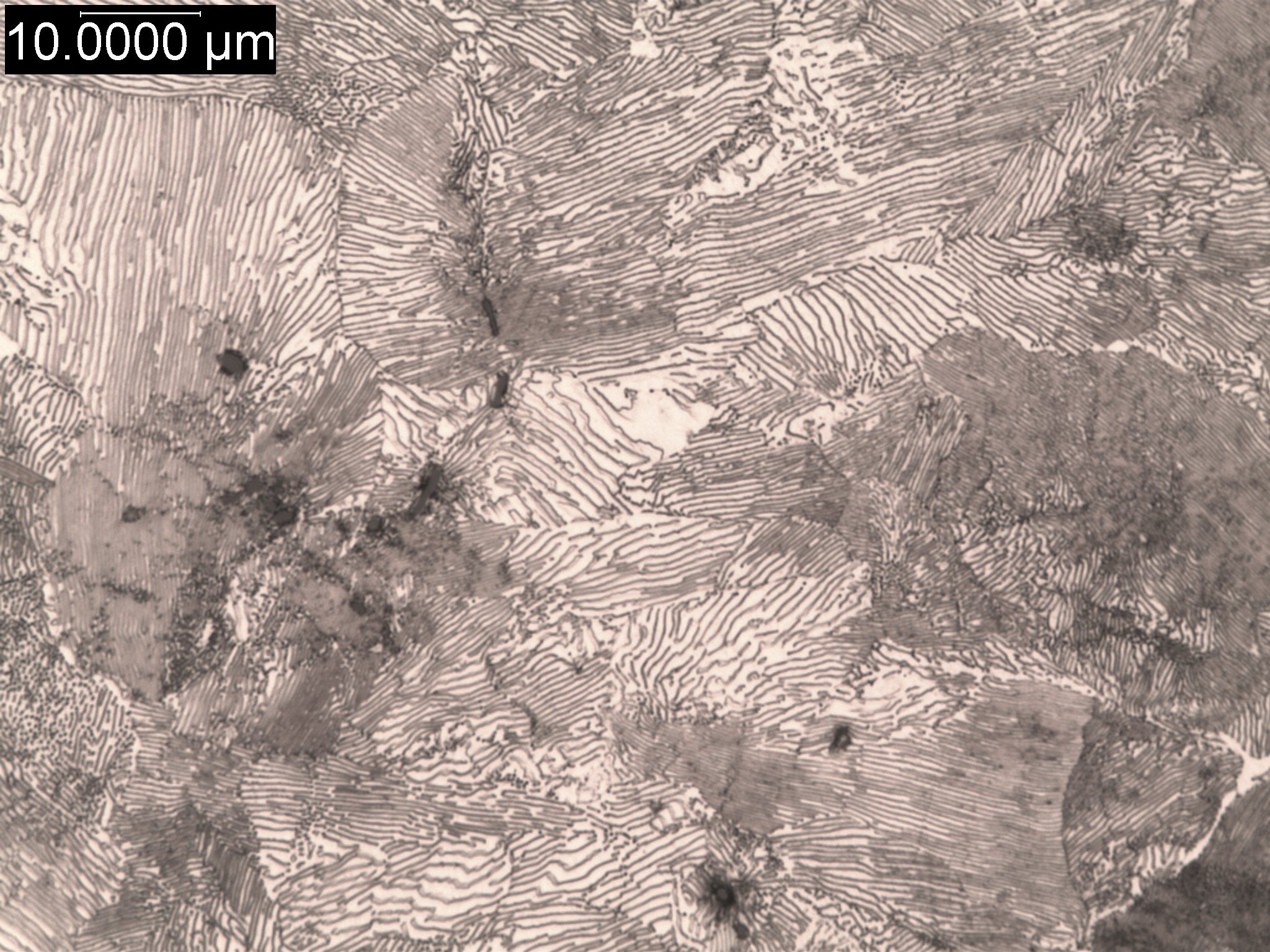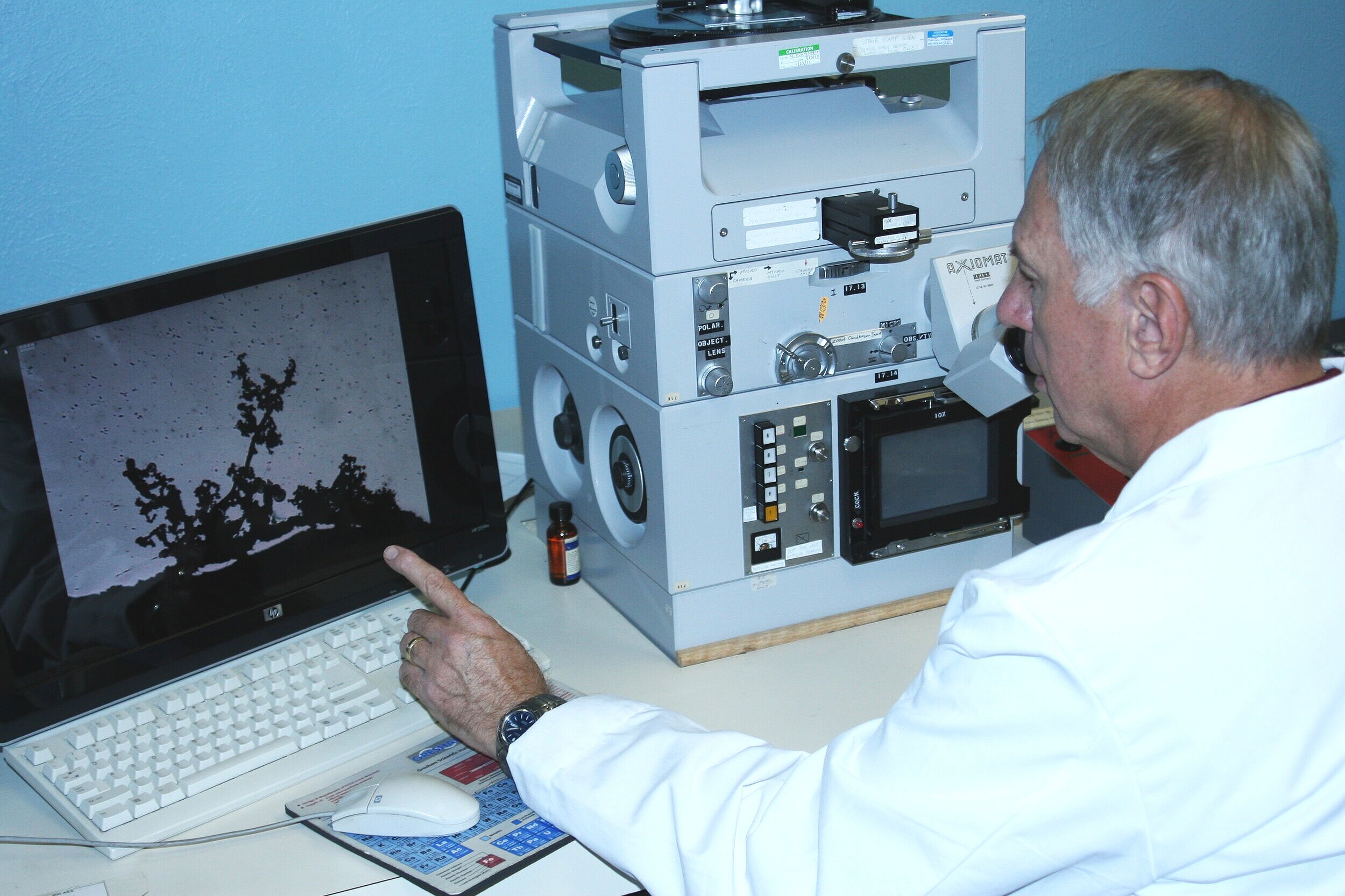metallographic Exam
Laboratory metallographic examination, also known as metallography, is a specialized field in materials science and engineering that involves studying the microstructure of metallic materials.
Metallography utilized inverted optical light for the detailed characterization of the microstructure of metallic materials. By examining the internal structure of a material, it is possible to identify and analyze various features such as grain size, grain boundaries, phases, inclusions, precipitates, and defects. This information is crucial for understanding the material's properties, performance, and behavior.
Metallographic examination is typically performed on polished cross sections, which may be etched to bring out the structure of the material by selectively corroding grain boundaries. Metallographic exam is often a critical tool for characterizing the extent of cracks and pits. Additionally, this inspection is used to detect crack and porosity defects or to characterize post processing changes due to casting, forging, machining, welding, heat treating and coating.
Metallographic examination is performed by using state of the art optical microscopes equipped with PAXcam digital cameras and image analysis software. Scanning electron microscope can be employed when higher resolution and micro-chemical analysis are required.
Laboratory metallographic examination offers numerous benefits, including improved material characterization, quality control, material selection and development, failure analysis, process optimization, and advancements in research and development. It plays a crucial role in ensuring the reliability, performance, and safety of metallic materials in a wide range of industries, including aerospace, automotive, construction, and manufacturing.
SPECIFICATIONS
ASTM E3 - Preparation of Metallographic Specimens
ASTM E112 - Grain Size
ASTM E45 - Inclusion Content of Steel
ASTM E1077 - Depth of Decarburization of Steel
ASTM E1268 - Degree of Banding or Orientation of Microstructures
ASTM A247 - Microstructure of Graphite in Iron Castings
ASTM E340 - Macroetching Metals and Alloys
ASTM E407 - Microetching Metals and Alloys
CAPABILITIES
Grain size analysis
Particle size/distribution
Coating thickness and case depth
Inclusion rating
Ferrite/pearlite percentage
Porosity
Grain flow pattern
Phase area fraction
Flake size classification
Nodularity
SAMPLE REQUIREMENTS
Up to 10″ diameter cross section; typically <1.25″ section


